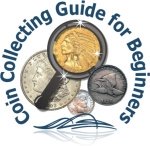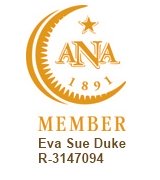United States Coin Grading Scale
The coin grading scale created by Dr. William Sheldon in 1949 was merged with the descriptive terms used earlier and was adopted by the American Numismatic Association (ANA), a non-profit group created in 1891. The ANA has been chartered by Congress since 1912.
The American Numismatic Association's 0-70 point coin grading scale is summarized below. These are the grades and descriptions that are most often used for coin grading in the United States.
The process of coin grading is not an exact art, and even using the coin grading scale, some experts often times will not agree on a coin's grade. That is why the major coin grading services will have two or more experts independently grade each coin using the coin grading scale. If two experts should disagree on where a particular coin fits in the coin grading scale, a third expert will examine the coin to break the tie.
It takes a lot experience to grade coins accurately, but as a beginner you can get reasonably close to the approximate grade of your coin by using the following simple guidelines.
Coin Grading Scale:
Circulated Coins
|
Grade
|
Definition
|
Poor-1
or
P-1
|
Also known as Basal State - You can barely make out the type of coin it is, but little else. This is a coin that is badly damaged or worn smooth.
|
Fair-2
or
FR-2
|
You can barely make out the type and date of coin and the coin is damaged or extremely worn. There may be holes, it might be bent, etc.
|
About Good
or
AG-3
|
This coin is very heavily worn with portions of lettering, date and legendsLegend
Principle inscription on a coin. worn smooth. The date may be barely readable (possibly with some effort). Some lettering should be apparent, if not necessarily readable. Often, only parts of the last two digits will be visible.
|
Good
or
G-4
|
This is a heavily worn coin. Major designs are visible, but with faintness in areas. The head of Liberty, wreath, or other major features should be visible in outline form without center detail. On some coins, full rimsRim
Raised portion of the design along the edge that protects the coin from wear. are not required for this grade, but you must be able to read the date and mint markMint Mark
Small letter (or other symbol) indicating at which mint the coin was struck (made)..
|
Good-plus
or
G-6
|
This coin has a full rimRim
Raised portion of the design along the edge that protects the coin from wear. plus major devicesDevice
Pattern or emblem used in the design of a coin. and features are clearly outlined but with heavy wear.
|
Very Good
or
VG-8
|
This is a well worn coin but with a full rimRim
Raised portion of the design along the edge that protects the coin from wear. with clearly discernable devicesDevice
Pattern or emblem used in the design of a coin. and features. Most legendsLegend
Principle inscription on a coin. are readable clearly, but the whole coin is still significantly worn.
|
Fine
or
F-12
|
This coin shows moderate to considerable even wear throughout, however the entire design is bold with an overall pleasing appearance. All lettering, including the word LIBERTY, which appears on 28 coin types either on the shield or headband, is visible, with some weaknesses. It has a distinct rim.
|
Very Fine
or
VF-20
|
This coin has clearly readable but lightly worn legends, devices show good detail, rims are clean, but the whole coin shows moderate wear on the high points and a little wear below.
|
Choice Very Fine
or
VF-30
|
This coin has light even wear on the surface and highest parts of the design, but with all lettering and major features sharp.
|
Extremely Fine
or
EF-40
|
The design on this coin is lightly worn throughout, but overall, features are sharp and well defined. A bit of lusterLuster
This is the glossy, shiny appearance of a coin or the coin's ability to reflect light; brilliance. may show.
|
Choice Extremely Fine
or
EF-45
|
This coin shows light overall wear on the highest points. All design details are very sharp. Some of the Mint lusterLuster
This is the glossy, shiny appearance of a coin or the coin's ability to reflect light; brilliance. is evident.
|
Choice Extremely Fine
or
XF-45
|
The legends and devices on this coin are clear and sharp, with slight wear on the high points, and great eye appeal.
|
About Uncirculated (AU) Coins
|
Grade
|
Definition
|
About Uncirculated
or
AU-50
|
This coin has sharp legends and devices show only a trace of wear on the highest points. There must be at least half of the mint luster still present.
|
Choice About Uncirculated
or
AU-55
|
A coin having less than a trace of wear on only the highest points of the design but no other defects and with most of its luster remaining. This coin also has great eye appeal.
|
Choice About Uncirculated
or
AU-58
|
This coin is virtually uncirculated, except for minor wear marks on high points. Nearly all mint luster must be present, and it must have outstanding eye appeal.
|
Mint State (MS)
MS is a term that means the same as Uncirculated (UNC) to describe "new" coins showing no trace of wear. There are 11 grades of MS coins, ranging from MS-60 to MS-70.
|
Grade
|
Definition
|
|
MS-60
|
This coin has no trace of wear but may show a number of contact marks, and surface may be spotted or lack some luster. A ?below average? Uncirculated specimen.
|
Choice Uncirculated
or
MS-65
|
This coin is an above average Uncirculated coin which may be brilliant or lightly toned and has very few contact marksContact Marks
Minor scratches and abrasions on uncirculated coins from being in contact or rubbing against other coins. on the surface or rim.
|
Perfect Uncirculated
or
MS-70
|
This coin is in perfect new condition, showing no trace of wear. The finest quality possible, with no evidence of scratches, handling or contact with other coins. Very few regular issue coins are ever found in this condition.
|
Proof (PR)
A proof coin is a specially made coin distinguished by sharpness of detail and usually with brilliant mirror-like surfaces. Proof refers to the method of manufacture and is not a condition. There are 11 grades of PR coins, ranging from PR-60 to PR-70.
|
Grade
|
Definition
|
|
PR-60
|
Refers to a proof with some scattered, small contact marks and hairlines that may be visible to the unaided eye. Usually less than full luster.
|
|
PR-65
|
Shows some very fine hairlines, contact marks, or other minor defects, visible only under magnification. Considerable luster.
|
|
PR-70
|
No handling marks or defects, even under high magnification. Full luster. A flawless coin, virtually non-existent.
|
What Would You Like To Do Now?




